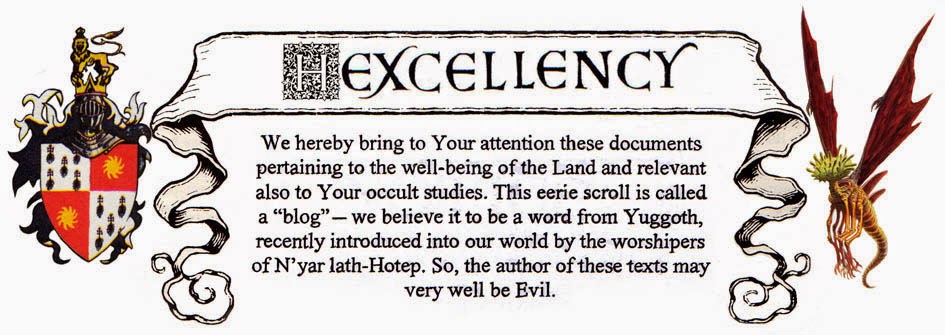Dungeons & Dragons gave us the
first amazing encyclopedia of fantasy creatures: strong monsters, weak
monsters, average monsters, unique individuals, with funky illustrations,
stat-blocks, treasure types, etc. That was good ol’ 1977.
Forty years later, you can “collect” a
thousand different dragons in Dragon Mania Legends, or catch hundreds
of Pokémons with your phone. What hyperconsumerism did with the original idea
of a “monster compendium” is appalling.
My nephew turned nine last April, and he’s
obsessed with Nexo Knights and Pokémon and Dragon Mania.
Often he begs my brother to buy him more gems – or whatever in-game stuff –
because he absolutely wants to face off against this or that powerful
monster. That’s okay. We did the exact same thing, back in the day. I remember
being obsessed with Orcus: I wanted my fighter / magic-user to take him on,
just to see how many rounds I’d last. My friend told me, “No problem. Grab your
lucky dice. You’re duelling with Orcus in a dream. You won’t lose your
character... Roll init!”
I lasted two rounds, and blew every Save.
But at least I didn’t have to use my credit card and buy a goddamned pack of
200 virtual gems. Oh, and I didn’t have a credit card.
Video games spoiled almost everyone. Dying
is another excellent example. My nephew has never lost a character, ever. The
iPad or Xbox games are difficult, sure, but on the other hand, you won’t die,
you’ll “respawn”. Because dying is such a huge bummer, game companies had to
render their “clients” immortal in order to keep them happy. Keep paying,
and you’ll keep living.
And that’s the problem right there – fewer and
fewer “players”, more and more “clients”. Clients won’t ever be killed by a
game. In the event of their character’s death, they would simply walk away;
after all, they’ve invested time and money into this, and now it’s gone. So
that company loses a client.
Bad business model.
Then again, the respawn principle
existed in First Edition D&D already, since player characters could be
resurrected up to 18 times. The TPK was one of the only ways PCs could die
permanently (i.e. nobody left standing to bring any and all unconscious
comrades to the nearest temple and cough up some gold).
The RPG death is something recent, in a
sense that people didn’t experience anything like it before, let’s say, 1976.
Do you ever put three, four, or five years in one single game of chess,
dodgeball, or poker? Do you ever put three years of invested time and passion
on the line in any other kind of entertainment? So yes, in a way, I can
understand this respawn school of thought. Vampire: The Masquerade came
up with a clever in-game respawn device – it’s demanding indeed to permanently
destroy a vampire!
Still, the true RPG death is something that
should be treasured.
“But back then, the finality of it all
seemed dramatic, and with someone who was willing to not just end the game
there but play out the result of a death or failure in the continuing context
of an adventure? It was exciting and new.”
– David Goldfarb
Not so long ago there was this whole debate
on Twitter about “playing D&D for free”. That’s another fitting example of
the Player vs Client rift, and what I call the role-playing generation gap. My
friends and I have been playing Dungeons & Dragons and Call of Cthulhu
and Warhammer for free since 1986 with the same books and character
sheets and dice. This is how people used to play before Wizards of the Coast
and Dwarven Forge. What else do you really need?
I said it before.
I’ll say it again. In the very
beginning, Gygax himself was staunchly opposed to the idea of published
adventures. He wanted to put out those three core books, and let both players
and Dungeon Masters come up with the rest.
We basically went from Gary “this is the
source for creating imaginative situations” Gygax to Mike “what additional
product can we give you” Mearls. From DIY to consumerism. But the same thing
happened everywhere, anyway. World War II was very “DIY”, in a way; our
grandmothers worked part-time in weapons factories. Nowadays, forget the
grandmas: war has become big business. Same thing with role-playing games. Even
Sly Flourish says he’s “leaving the design to the professionals”. But who are
these professionals, and where do they come from? They were once grandmas
working part-time in weapons factories, right? Hell, I’m still a grandma
working part-time in a weapons factory – and proud of it! Because that Gygax
blurb clearly indicates that there wasn’t any “professionals” around, back in
’85.
Role-playing games didn’t need professionals
to become a huge hit – players were enough.
Players, not clients.


